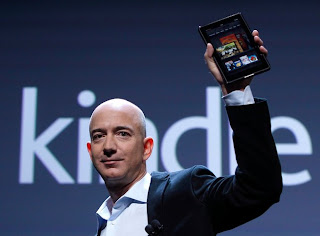U.S. Growth Slows to 2.2%, Report Says
The economic recovery slowed more than expected early this year, raising fears of a spring slowdown for the third year in a row and giving Republicans a fresh opportunity to criticize President Obama’s policies.
The United States gross domestic product grew at an annual rate of 2.2 percent in the first quarter, down from 3 percent at the end of last year, according to a preliminary report released Friday. It was the first deceleration in a year, but it was not nearly as severe as other setbacks in the last couple of years.
Mitt Romney, the presumptive Republican presidential nominee, has been hammering on economic issues all week, insisting that the president has held back the recovery and intends to do further damage.
But the White House focused on the bright spots in the report, like solid growth in consumer spending and a surge in residential building.
“When you look at the report in the totality, I think it shows that the private sector is continuing to heal from the financial crisis,” said Alan Krueger, chairman of the president’s Council of Economic Advisers. Congress should pass elements of the president’s jobs plan, he said, like one that would subsidize the employment of teachers and first responders to emergencies. “We would like to see the pace of economic growth pick up, and those additional measures which the president proposed are well targeted to the areas of weakness in the economy now.”
Representative Kevin Brady, a Republican from Texas and vice chairman of the Joint Economic Committee, called the numbers “beyond disappointing.”
“The damage being done by the Obama administration’s policies have produced a weak recovery,” he wrote in a statement.
The American economy has been growing since the second half of 2009, coming close to a 4 percent growth rate in early 2010 before faltering. Growth slowed nearly to a halt in the first quarter of 2011 but accelerated throughout the rest of the year.
The first-quarter growth was weaker than expected. United States stock markets largely shrugged it off, however, perhaps in part because the country is growing while many economies are contracting.
Economists initially predicted a much weaker showing in the latest quarter, partly because of a large accumulation of inventories in the fall and winter that needed to be worked off. But in the last few weeks, expectations rose on strong jobs reports and rising consumer confidence.
Consumer spending did turn out to be the major strength early this year, growing 2.9 percent compared with 2.1 percent in the last quarter of 2011. Business investment, which had been a bright spot, declined in the most recent quarter.
Government spending also fell more than anticipated, lopping more than half a percentage point off total growth, thanks in part to a particularly large drop in military outlays.
Many economists pointed out that consumer spending, mostly on cars and other large items, seemed to have come at a cost. Consumer savings declined. That suggests that spending growth could become unsustainable as households exhaust their reserves. But estimates of personal income tend to be revised upward, and past declines in the savings rate have been erased by later estimates.
Economists were also troubled by the decline in business investment. Businesses spent more on equipment and software but much less on infrastructure. Some of that decrease was expected because a tax break for capital investment expired at the end of the year.
By far the steepest decline in investment in the first quarter was in construction related to mining, oil and gas, while manufacturers actually increased their spending on factories and office buildings.
Mark Zandi of Moody’s Analytics said the low investment numbers showed that businesses remained “very cautious.”
Growth in residential housing swelled by 19 percent, the fourth consecutive increase in that much-diminished sector and the first time it has shown a straight year of growth since 2005. Economists argued over how much of that increase — and, for that matter, the surprising strength in consumer spending — was caused by the unseasonably warm winter.
Other factors that contributed to the growth have already appeared to soften, contributing to fears of another false dawn. Shipments of durable goods increased last month, but new orders showed the steepest drop since January 2009. The trade balance improved, but job growth weakened and, more recently, new claims for unemployment benefits have risen.
“The G.D.P. report was disappointing,” economists at Morgan Stanley wrote. “The mix of activity pointed to slower growth ahead.”
But Ian Shepherdson of High Frequency Economics dismissed fears of another significant slowdown, saying that last year’s hiccup was the result of a series of external shocks, like a spike in gas prices (this year’s was less severe and is already subsiding) and the Japanese earthquake.
“What have we got this year that’s comparable?” he asked. “Nothing. Europe is sort of a constant rather than a variable now.”
A growth rate of 2.2 percent is barely enough to nudge the unemployment rate down, and it is substantially lower than the 3 percent that is considered the comfort zone for incumbent presidents.
“I don’t think the issue is whether or not the growth rate is sustainable,” said Steven Blitz, chief economist at ITG Investment Research. “I think the question is whether the growth rate that’s sustainable is acceptable — politically and socially acceptable.”
Still, 2.2 percent was enough to generate envy in Europe, where many countries are already in recession and where this week Britain announced that it had entered the dreaded “double dip.” Stagnation in Europe and a slowing of China’s breakneck expansion have weakened global demand even as corporate profits have continued to outpace expectations.



Comments
Post a Comment